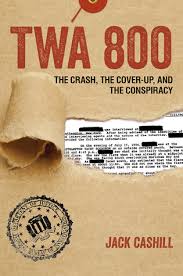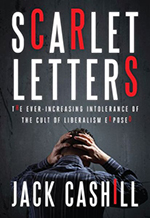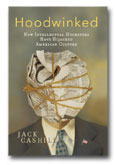Willie Horton: A Fake News Story That Refuses to Die
_____
Order Jack Cashill's latest book, TWA 800: The Crash, the Cover-Up, and the Conspiracy
______
Order Jack Cashill's book,
Scarlet Letters
___
Get your copy of Jack Cashill's book, "You Lie!"

___
Get your copy of Deconstructing Obama

___
Jack Cashill's book:
Hoodwinked: How Intellectual Hucksters have Hijacked American Culture
© Jack Cashill
AmericanThinker.com- January 3, 2017
In an otherwise observant Politico article, “The Death of Clintonism,”Todd Purdum unwittingly reminded conservative readers why they distrust the major media.
For the article, Purdum interviewed Elaine Kamarck, a senior domestic policy adviser under Bill Clinton whose White House Purdum covered as a reporter. Having been around long enough to remember George W. H. Bush’s 1988 campaign against Massachusetts governor Michael Dukakis, Purdum and Kamarck have no excuse for misrepresenting the campaign’s most decisive ad.
The subject of the ad was Dukakis’s support of his state’s insane furlough program for convicted killers as a form of criminal rehabilitation. The most notorious example of this insanity was the furlough of a thug named Willie Horton.
To merit his life in prison, Horton robbed a 17-year-old gas station attendant, fatally stabbed him 19 times, and dumped him in a trash can to die. Twelve years later, despite a life term without parole, Horton received a weekend furlough, during which he knifed, blinded, and gagged a man in Maryland, raped his fiancée, and stole their car. Dukakis supported the furlough program even after this incident. So perversely liberal was the idea that Al Gore cited the Horton incident in his primary campaign against Dukakis.
The Bush campaign did not show or name Willie Horton in the ad it produced on this subject. The ad showed prisoners passing through a revolving door while telling how liberal Massachusetts governor Michael Dukakis had supported this program. Of the thirty prisoners shown in the Bush ad only three were black. In fact, during the general campaign Horton’s name rarely, if ever, came up. In November 1988 the great majority of voters had no idea who Horton was.
That changed soon after the election. Anxious to explain their defeat, Democrat leaders laid it off to the implicit racism of the Bush campaign. Sound familiar? To prove their point, Democratic operatives unearthed an ad featuring the mug shot of Horton, an African American, that an independent group had run in New England for two weeks. In the subsequent months and years, in order to paint the new president and his cronies as racist dirty tricksters, a bitter punditry would repeatedly show the Horton mug shot ad and attribute it to Bush.
The left’s re-imagining of the Willie Horton incident reached its demented apogee in Michael Moore’s 2002 film, Bowling For Columbine. While scolding whites for their fear of the black man, Moore showed an ad with Horton’s mug shot that he attributed to Bush’s campaign. A sloppy propagandist, Moore inserted the “Willie Horton released. Then kills again” caption into the ad indifferent to the fact that Horton did not kill upon his infamous weekend leave.
Moore assumed, as did the media, that the Bush ad worked by playing on America’s chronic anxiety about the black man. The implication, of course, is that the public would have welcomed Dukakis’s furlough program had it freed only white killers to rape and plunder. Moore’s film, by the way, received a special prize and a standing ovation at Cannes and won an Academy Award for best documentary. And the Horton bait and switch was just one of the film’s many conscious deceptions.
In discussing the Clintons, Kamarck and Purdum recall the Horton incident the way they want it remembered. According to Purdum, Bill Clinton emerged as a new style Southern Democrat “when memories of Republicans’ disemboweling of Michael Dukakis with the infamous Willie Horton ad, were still painful and fresh.” Disemboweling? Infamous? Yes, that is the way the media roll. Democratic agitprop morphs into “news.” News hardens into history. A lie becomes legend.
Said the late Christopher Hitchens of Moore’s cinematic style, “If you leave out absolutely everything that might give your ‘narrative’ a problem and throw in any old rubbish that might support it, and you don’t even care that one bit of rubbish flatly contradicts the next bit, and you give no chance to those who might differ, then you have betrayed your craft.”
Hitchens might as well have been speaking about the major media in general.

Jack Cashill’s newest book, TWA 800: The Crash, the Cover up, the Conspiracy can now be ordered at Amazon.



